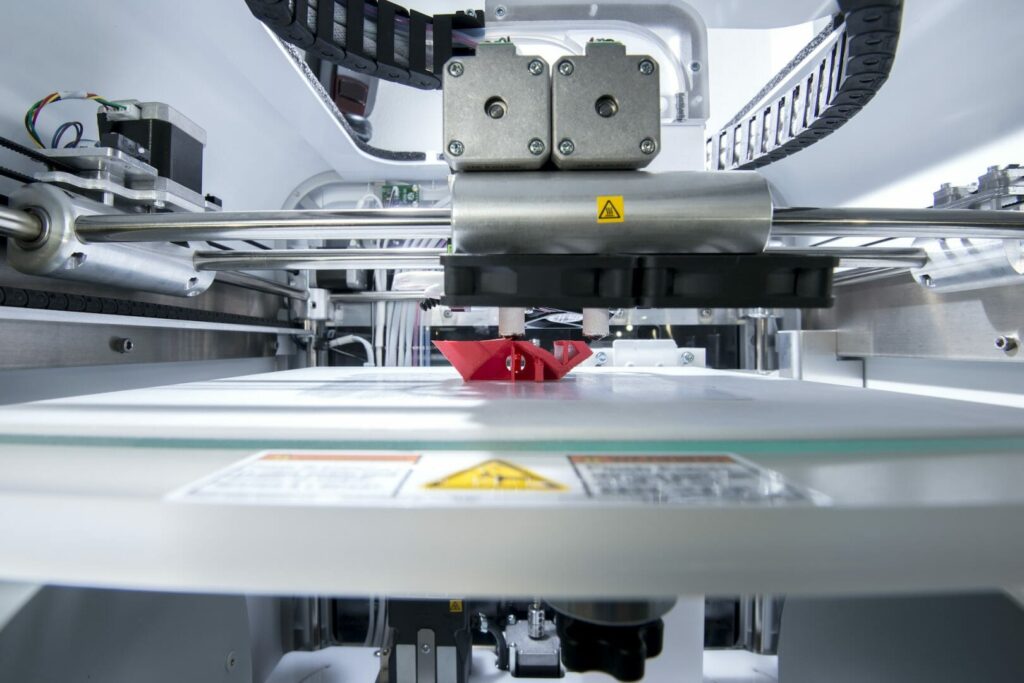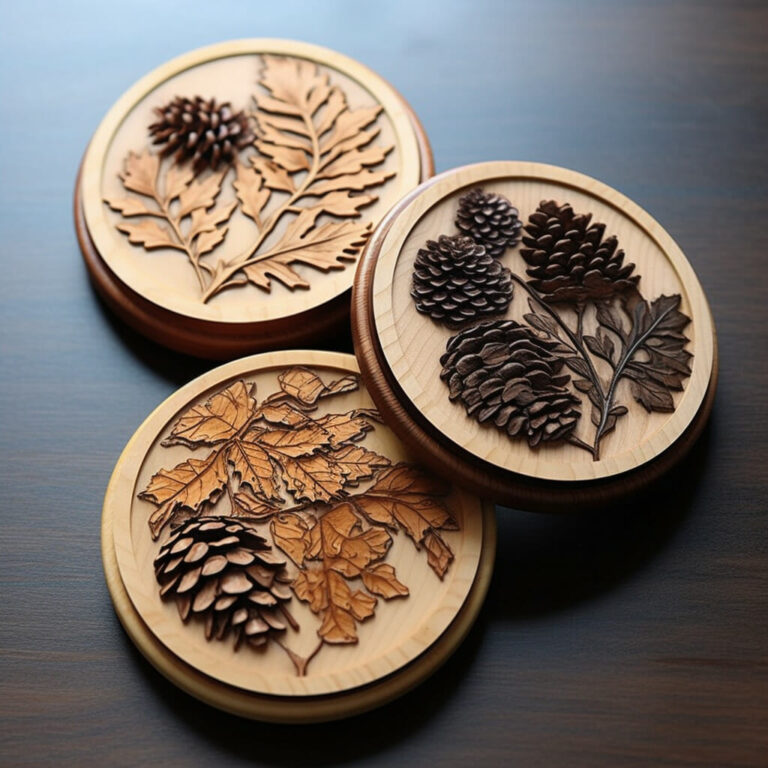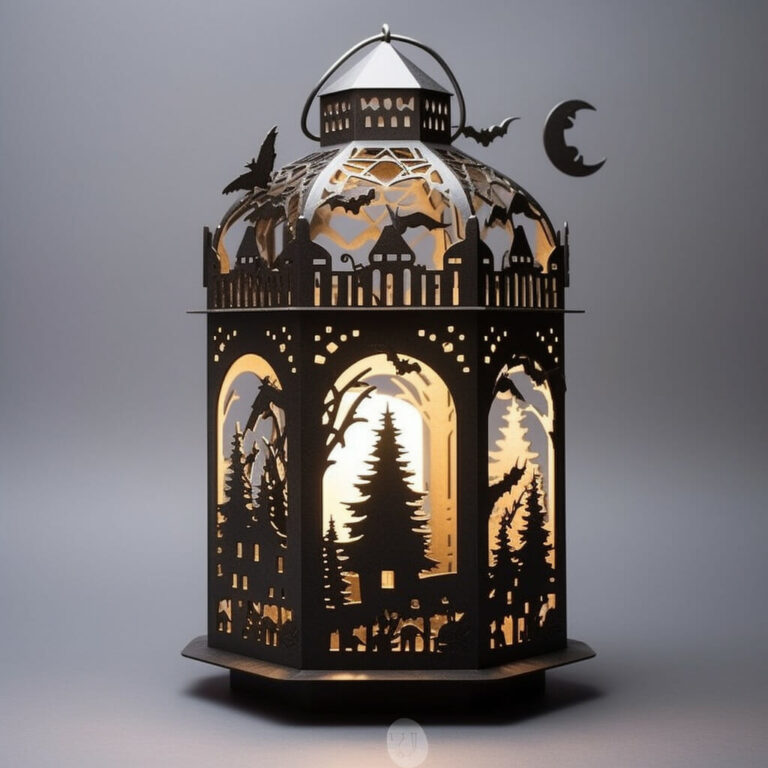Whether you’re creating products to sell or making items for your own home, you might be thinking about getting a laser cutter or 3D printer to expand your options. Either machine can be used to make one-of-a-kind art or unique prototypes for future production. Both laser cutters and 3D printers have creative and practical applications, and both make a useful addition to a makerspace or workshop, but the manufacturing methods and materials used differ between the two machines.
What Is a Laser Cutter?
Laser cutters use a laser beam to slice away pieces of a flat material in predetermined shapes or patterns. The process of removing pieces to create a product is called subtractive manufacturing.
Before operating the laser cutter, you have to create the design you want in a computer so the selective laser beam knows where to slice. This process is often fairly simple and does not require specialized programming knowledge, even when you’re creating intricate designs.
These machines can also do laser engraving or etching, which involves making a laser cut that doesn’t go all the way through the material but just deep enough to leave a visible mark on the surface. A laser engraver works on fragile materials such as glass without shattering or damaging the underlying material. Laser etching and engraving can be a viable business of its own separate from manufacturing laser-cut objects.
What Is a 3D Printer?
A 3D printer deposits layers of filament to build a 3D object, a process called additive manufacturing. The three-dimensional objects created by these machines are typically small because of the size of the chamber or platform on the machine. Before using a 3D printer, you need to create the model using 3D modeling software or purchase a model made by a professional 3D modeler that will work in your machine.
The machine heats the filament to melt it and send it through a pen-like tip for precision. Using a digital 3D model created on a computer as the template, the 3D printer deposits filament on a platform or tray from the bottom up, building a solid object that matches your design. Filament can be made of a few different materials, generally types of plastic such as PLA or ABS. The final object produced by a 3D printer often has a rough surface, which you can sand down to make it smoother.
Materials Used in 3D Printers Vs Laser Cutters
Most 3D printers use a plastic filament to build 3D objects. You can sometimes find biodegradable filaments or filaments mixed with other materials that work in particular machines. Filaments also come in a range of colors, which lets you develop multihued designs. One big downside to filament is that it tends to be a fairly weak material. 3D objects made of filament may break or bend, and some filament degrades over time.
Some 3D printers can build objects from other materials, such as metal or biocompatible plastics. You cannot typically switch between materials, though. If you want to print both filament and metal designs, you may need separate 3D printers to handle each material.
If you’re searching for something to use with a variety of materials, a laser cutter is a better choice. Laser cutters work on a wide range of different materials, including wood, fabrics, acrylic and composite materials. Laser cutters can also etch glass and metal. You can quickly switch between materials without having to change out any pieces on your machine.
Speed and Accuracy
Whether you’re using a 3D printer or laser cutter, your project requires software for planning your final design. Some machines have onboard hardware and software that lets you program your design directly into the machine, while others require you to do the initial design work on a separate computer system and then transfer your design to the machine.
Laser cutters tend to deliver a finished product much more quickly than a 3D printer. The high precision of a laser beam cutting into your material lets you exert complete control over how the final product looks. A laser cutter can create a minimum cut depth of 0.006 inches, allowing for extremely detailed designs that are difficult to achieve through other means.
The high speed of a laser printer makes it easy to try out multiple designs in a row to figure out which idea you prefer. You can also quickly create more of a popular item if you’re making laser-cut items for sale, which simplifies the process of restocking during busy periods.
3D printers may have trouble translating the design of a particular 3D model into a finished 3D object because flaws not visible on the computer screen may cause holes or bulges in the final product. As an example, a long stem with a bulb at the top may look fine on the computer screen, but once printed, the stem is not thick enough to hold up the top bulb, so the item cannot be built. 3D printers also sometimes jam, which requires you to remove the built-up material before continuing the 3D print job.
Both laser cutters and 3D printers are safe to use in a workshop or makerspace environment with adequate ventilation. A laser cutter may produce some smoke and fumes, but these dissipate easily in a ventilated space. Neither type of machine creates excessive noise, so their relatively quiet operation means that ear protection isn’t needed when operating a laser cutter or 3D printer.
Making 3D Objects with a Laser Cutter Vs 3D Printer
If you’re making 3D objects with a laser cutter, you need to assemble them into the final object after producing the flat pieces. This tends to work well for angular creations, such as boxes and pyramid-shaped items. The ability to engrave materials using a laser cutter lets you personalize your creations by creating a panel or plate with a name or phrase to attach to your final product.
3D printers create the 3D object from the ground up with filaments layered on top of each other, so they tend to work well for creating organic shapes that have smooth, curved surfaces instead of sharp, distinct edges. The size of your 3D printer limits the size of the objects you can create, since you can only make something as large as the tray or chamber on your machine. If you need a larger object, you can run multiple 3D print jobs and then fit together the individually printed pieces to make a larger object.
Cost Differences Between Laser Cutters and 3D Printers
Both laser cutters and 3D printers come in a wide range of price options, but 3D printers tend to be less expensive than laser cutters. Operation costs tend to be higher for 3D printers, though, since the filament can be expensive and some parts, such as the extruder nozzle, may require replacement over time. You also need different spools of filament for each color you want to use, and you may need to clean out the extruder when switching between different types of filament, which can create waste. Because of the expense of creating individual 3D printed objects, these machines are often used for prototyping, not large-scale manufacturing.
When to Choose a Laser Cutter Vs 3D Printer
The choice of a laser cutter vs 3D printer depends mainly on the type of objects you want to produce. In general, laser cutters are best for making flat, angular objects with intricate surface details, and 3D printers are best for creating small irregular components or solid objects.
The objects created in a 3D printer are often not high-quality enough for sale, and the slow speed of production makes it infeasible to create multiple 3D objects to sell. 3D printed objects make good prototypes for testing new designs, and 3D printers are often used to create single components that replace or enhance objects already in a home or office, such as a new desk accessory or a replacement leg for a piece of furniture.
Laser cutters are better suited to consistent consumer-ready production, such as creating holiday ornaments for sale or etched champagne glasses for weddings.
Many people have both a laser cutter and a 3D printer, and the two machines can complement each other. Additive and subtractive manufacturing aren’t necessarily competitive processes and can be used together. You might want to try creating different components of a prototype on each machine and then attaching the parts to create a unique object with both flat and irregular surfaces.
Start Your Own Laser Cutting Business
If you’re ready to add a laser cutting machine to your workspace and start creating your own designs for sale or personal use, check out the full range of laser cutters from Thunder Laser.




